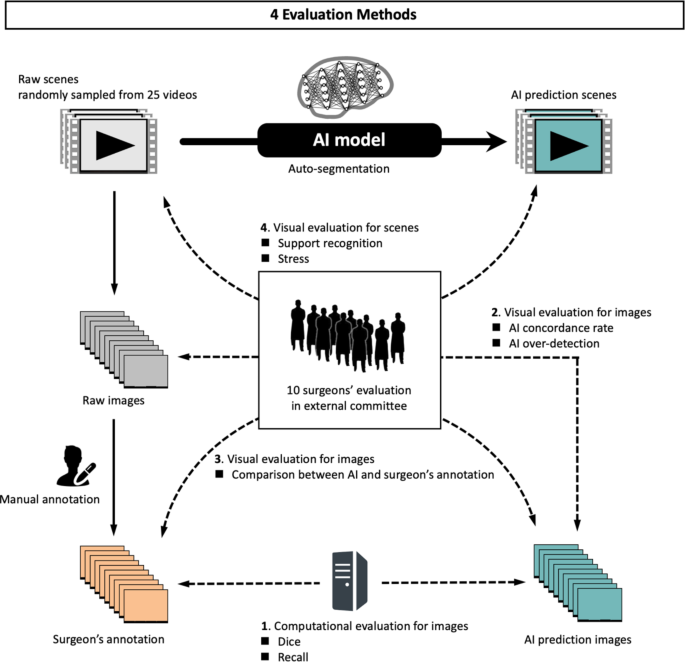
The Future of AI Evaluation: Why Community-Powered Benchmarks Are Replacing Traditional Tests
The End of the Black Box: A New Era for AI Model Evaluation
In the rapidly evolving landscape of artificial intelligence, the pace of development is staggering. With every piece of GPT-4 News and the mounting anticipation for GPT-5 News, a critical question looms larger than ever: How do we accurately and transparently measure the capabilities of these powerful models? For years, the industry has relied on a set of standardized, static benchmarks like MMLU, HumanEval, and Big-Bench. While foundational, these tests are increasingly showing their age. They operate behind closed doors, are susceptible to “teaching to the test,” and often fail to capture the nuanced, real-world skills required for specialized applications. This opacity has created a trust deficit, leaving developers, enterprises, and the public to rely on marketing claims and leaderboard scores that don’t tell the whole story.
A paradigm shift is underway, driven by a growing demand for transparency, decentralization, and real-world relevance. The latest GPT Benchmark News points towards a revolutionary approach: community-powered, predictive, and ungameable evaluation platforms. This new model moves the process of AI assessment from the private labs of a few tech giants into the public square. By empowering a global community of developers, researchers, and domain experts to create, validate, and run tests, this approach promises a more dynamic, comprehensive, and trustworthy system for understanding what AI models can truly do. This isn’t just an incremental update; it’s a fundamental rethinking of how we build reputation and establish trust in the burgeoning AI ecosystem.
Deconstructing the Old Guard: The Limitations of Static AI Benchmarks
To appreciate the significance of this new movement, it’s essential to understand the shortcomings of the current benchmarking regime. Traditional benchmarks have been instrumental in fueling AI progress, providing a common yardstick for comparing models. However, their static and centralized nature presents several critical vulnerabilities that are becoming more pronounced as models grow in sophistication.
The Problem of Data Contamination and “Teaching to the Test”
One of the most significant issues is data contamination. The datasets used for popular benchmarks are often publicly available. There’s a high probability that these datasets have been inadvertently included in the massive troves of internet data used to train the next generation of models, from OpenAI’s GPT series to its competitors. This is a major topic in recent GPT Training Techniques News. When a model is evaluated on data it has already seen during training, its performance score is artificially inflated, rendering the test useless as a measure of true generalization and reasoning ability. This leads to a situation where models are not necessarily getting smarter, but simply better at memorizing the test answers, a critical flaw for anyone following GPT Research News.
Lack of Real-World Relevance and Niche Skill Assessment
Standardized tests, by design, focus on broad, general knowledge and skills. While useful, they often fail to evaluate the specialized capabilities required for real-world applications. For instance, a benchmark might test a model’s ability to write Python code, but it won’t assess its proficiency in a niche domain like writing smart contracts in Solidity or generating complex SQL queries for financial analysis. This is a major gap for developers working with GPT Code Models News or building solutions for specific industries, as covered in GPT in Legal Tech News or GPT in Finance News. A generic score doesn’t help an enterprise decide if a model is suitable for its unique, high-stakes workflow. The evaluation of multimodal capabilities, a hot topic in GPT Multimodal News and GPT Vision News, also requires more dynamic and creative testing than static image-captioning datasets can provide.
Centralization and the Risk of “Gaming the System”
The creation and curation of major benchmarks are controlled by a handful of academic institutions and corporations. This centralization creates a single point of failure and makes the system “gameable.” Model developers, knowing the exact structure and content of the tests, can optimize their GPT Architecture News and fine-tuning processes specifically to maximize their scores. This “leaderboard chasing” can divert resources from genuine innovation towards mere metric optimization. It stifles diversity in evaluation, as the entire industry aligns its success criteria with a narrow set of tests, ignoring other vital aspects like GPT Bias & Fairness News, safety, and ethical alignment, which are central to the ongoing conversation around GPT Regulation News.

A New Paradigm: The Mechanics of Predictive, Community-Driven Benchmarking
The emerging solution is a decentralized platform where the community itself curates the evaluation process. This model introduces several innovative mechanics designed to overcome the limitations of static benchmarks, creating a living, breathing, and continuously evolving measure of AI performance.
Step 1: Community-Sourced Test Creation
The foundation of this new system is its open and permissionless nature. Anyone, from an independent researcher to a domain expert in healthcare, can submit a new test. This democratizes the evaluation process. For example:
- A cardiologist could submit a series of prompts testing a model’s ability to interpret complex ECG reports, providing crucial insights for the GPT in Healthcare News community.
- A game developer could design tests to evaluate an AI’s capacity for generating creative and coherent dialogue for non-player characters (NPCs), relevant to GPT in Gaming News.
- An ethics researcher could create adversarial prompts designed to expose hidden biases or safety vulnerabilities, contributing directly to GPT Safety News and GPT Ethics News.
This approach ensures that the benchmark covers a vast and ever-expanding range of skills, reflecting the true diversity of real-world AI applications.
Step 2: The Predictive Layer and Incentive Mechanisms
This is where the model becomes truly “ungameable.” Before a new test is run against a suite of AI models (like GPT-4, Claude 3, and various GPT Open Source News alternatives), the community is invited to predict the outcome. Users can stake tokens or reputation points on how they believe each model will perform on the new, unseen task. This predictive layer serves two purposes:
- Quality Control: Tests that are trivial, nonsensical, or poorly designed are unlikely to attract significant engagement or confident predictions, naturally filtering out low-quality submissions.
- Human Insight as Data: The collective predictions of the community become a valuable dataset in themselves, representing a snapshot of expert sentiment and expectation regarding a model’s capabilities. Participants who make accurate predictions are rewarded, often with tokens that hold real value, creating a powerful incentive for thoughtful participation.
Step 3: Transparent, On-Chain Execution and Results
Once the prediction phase is complete, the test is automatically run against the target models via their APIs. The prompts, the models’ responses, and the final scores are then recorded immutably on a public blockchain. This on-chain transparency is revolutionary. It means that every single test and its result are publicly auditable. Anyone can verify the data, analyze the model’s specific failures, and build upon the test. This eliminates the “black box” problem entirely, fostering a new level of trust and accountability. This is particularly relevant for enterprises concerned with GPT Privacy News and data provenance when considering GPT Deployment News.
Implications and Insights for the Broader AI Ecosystem
The shift towards community-driven benchmarking has profound implications for every stakeholder in the AI world, from individual developers to large corporations and regulatory bodies.
For Developers and Engineers

For those working with GPT APIs News or exploring GPT Custom Models News, these platforms offer an invaluable resource. Instead of relying on a single, generic score, a developer building a marketing tool can filter for tests specifically related to copywriting, SEO, and brand voice analysis—topics central to GPT in Marketing News. They can see not just which model is “best” overall, but which is best for their specific use case. This allows for more informed decisions about model selection, GPT Fine-Tuning News strategies, and resource allocation. It also provides a direct feedback loop for improving GPT Inference News, as performance on niche tests can highlight needs for better GPT Optimization News, including techniques like GPT Quantization News and GPT Distillation News.
For Enterprises and Decision-Makers
Enterprises can leverage these platforms for deep due diligence. Before investing millions in integrating a model into their workflow, they can commission or find tests that simulate their exact operational challenges. A financial institution can evaluate a model’s ability to perform sentiment analysis on earnings calls, while a creative agency can test its prowess in generating ad copy, a key area of GPT in Content Creation News. This granular, skill-based reputation system reduces risk and ensures a better alignment between AI capabilities and business needs. It also provides a continuous, real-time pulse on the GPT Trends News, helping companies stay ahead of the curve.
For Researchers and Ethicists
The academic and ethics communities gain a powerful new tool for research. They can design and deploy sophisticated tests to probe the frontiers of AI reasoning, explore failure modes, and systematically uncover biases. A researcher studying GPT Bias & Fairness News could submit tests designed to measure political or demographic bias across different languages, leveraging the platform’s reach to gather robust, cross-cultural data. The transparency of the system allows for reproducible research and collaborative efforts to build safer and more aligned AI, directly influencing the discourse on GPT Safety News.
Recommendations and Navigating the Frontier
While this new paradigm is incredibly promising, it’s not without challenges. Adopting and participating in these platforms requires a strategic approach.
Pros:
- Transparency and Trust: On-chain, auditable results create an unprecedented level of trust.
- Resilience to Gaming: The dynamic and unpredictable nature of community-submitted tests makes it nearly impossible to “teach to the test.”
- Real-World Relevance: The benchmark directly reflects the needs and challenges of the user community, ensuring practical applicability.
- Continuous Evolution: The platform evolves in real-time as new skills are needed and new models are released, keeping pace with the latest ChatGPT News and GPT Competitors News.
Potential Challenges and Considerations:
- Quality Control: Ensuring a high standard for community-submitted tests is crucial. Poorly designed or malicious tests could skew results. Robust incentive and reputation systems are needed to mitigate this.
- Community Engagement: The success of the platform depends on attracting and retaining a diverse and knowledgeable community. This requires clear value propositions and effective incentive mechanisms.
- Scalability: As the number of tests and models grows, the computational cost and complexity of running the platform will increase. Efficient GPT Inference Engines News and hardware strategies, as covered in GPT Hardware News, will be essential.
Best Practices for Engagement:
For organizations, the best practice is to become active participants, not just passive observers. Encourage your domain experts to contribute tests relevant to your industry. For developers, use the platform to benchmark your fine-tuned models against industry leaders on the tasks that matter most to you. Monitor the results not just for headline scores, but for the qualitative insights hidden within the model responses to challenging prompts.
Conclusion: Building a Collective Intelligence for AI Evaluation
The era of opaque, centralized AI benchmarking is drawing to a close. The future of evaluating powerful technologies like the GPT series lies in collective intelligence. Community-powered, predictive platforms represent a fundamental democratization of the process, shifting power from a few gatekeepers to the global community of users, developers, and researchers. By creating a transparent, ungameable, and continuously evolving standard, these systems do more than just rank models—they build a foundation of trust. They provide the granular, real-world insights needed to deploy AI safely, ethically, and effectively across every sector of our economy and society. As we stand on the cusp of even more powerful models, this shift isn’t just a welcome piece of GPT Future News; it’s an absolute necessity for navigating the path ahead with clarity and confidence.



